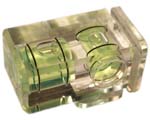Panora by Stitching
Use a tripod, a special head, and a digital camera
Source, and for More : http://www.panoguide.com/howto/panoramas/gear.jsp
Tripod
The camera should rotate around a fixed spot and should stay level
By using a tripod you can ensure that the camera rotates around a fixed spot and that it stays level. It also makes it much easier to take longer exposures, which may be useful if you want to get a nice sharp picture with everything in focus.
Check that you can lock the head of the tripod firmly and that it doesn't wobble when locked. If it does it will be difficult for you to make sure the camera stays level while you are shooting, especially if you have a large camera or if you use a panoramic head (see below), because the weight may make the tripod's head even more unstable.
If you do not use a tripod and/or fail to keep the camera level, you may have problems stitching your pictures (depends on the software used) and you may end up having to crop your panoramas down, thereby reducing the vertical field of view:
 |
Woodland scene shot without maintaining good level |
 |
Same picture, showing how it can be cropped |
 |
Same picture after cropping (black area shows how much has been lost) |
Spirit level
 |
| Spirit level |
A spirit level is a pretty essential extra and you can buy very cheap little spirit levels designed to fit into the hot shoe of an SLR camera (see left). Use the spirit level to make sure the tripod's head is level and that when you attach the panoramic head (see below) and/or camera, that these are level also.
Remote shutter release
If you find that you are doing long exposures quite often, then a remote release cable or an infra red remote release (if there is one for your camera) can be useful. By using this you also reduce the likelihood of accidentally knocking the tripod or camera while you are doing the shoot.
Panoramic head ("pano-head")
Kaidan Kiwi 900/950 panoramic head [object movie courtesy of Kaidan Inc.] |
A panoramic head is an additional attachment you put on the top of the camera. It allows you to position the camera so that it rotates around one of the nodal points of the lens. This in turn eliminates parallax. If you look closely at the object movie of the Kaidan Kiwi 900/950 panoramic head, left, you will notice that the centre of the lens is above the point of rotation and that the camera is rotating about a point in the lens, not the camera body. For more information see the description of parallax and the article about using a panoramic head.
All professionals use a panoramic head, except if it is simply impossible to use one for one reason or another. The reason is that parallax can result in a poor quality picture, so if you are selling your pictures, printing them very large or just being a perfectionist, you'll want to make sure you have a panoramic head so you can get the best possible pictures to produce the best possible panoramas. A panoramic head also makes shooting the pictures much easier, more systematic, and means that you will probably spend much less time trying to stitch the pictures together afterwards.
You can buy panoramic heads from Kaidan (see www.kaidan.com), Jasper Engineering (see www.stereoscopy.com/jasper/), Manfrotto (see www.manfrotto.com) and also from Peace River Studios (see www.peaceriverstudios.com). I have an old Kaidan Kiwi plus a Kaidan QuickPan Spherical.
Panoramic heads also make it easier to rotate the camera smoothly and many have click-stops of some kind and a spirit level so you can make sure the whole set up is level before you start shooting. These features are also available in the Q-top from ideesign, which is a very neat small tripod mount that provides a quick release shoe for the camera. The shoe is held very tightly in position when placed back onto the mount, and the shoe has 30 degree increments to make it easy to shoot a series of pictures for a panorama. Whilst the Q-top is not a panoramic head, it is a very neat and small alternative especially if you are travelling light.
Wide angle lens
By shooting several pictures and stitching them together, you can create a 360 degree panoramic picture, no matter what lens you have on your camera. A wide angle lens has the advantages that (i) you don't need to take as many pictures and (ii) you can capture more vertically so the picture doesn't look like a narrow 'slit'.
 |
garden scene after stitching, 18mm lens |
 |
garden scene after stitching, equivalent to a 38mm lens |
If you are considering buying a wide angle lens for your panoramic photography, bear in mind that although all stitching programs support rectilinear ('normal') lenses, very few support fisheye lenses.
If you are new to panoramic photography I suggest you postpone any ideas of buying a special lens until you have shot a few panoramic pictures... you will then have a good idea of whether you want or need a wide angle lens and how wide a lens you need to achieve the sort of pictures you want.
An 8mm lens is generally the widest lens available for any camera, and will capture approximately 180 degrees in a circular shaped picture. The iPIX system uses this lens exclusively and requires only two pictures back to back to create a spherical panoramic image. iPIX has patents that protect its technique and prohibit the use of any other software to achieve this same effect. (However there are alternative ways of creating spherical panoramas).